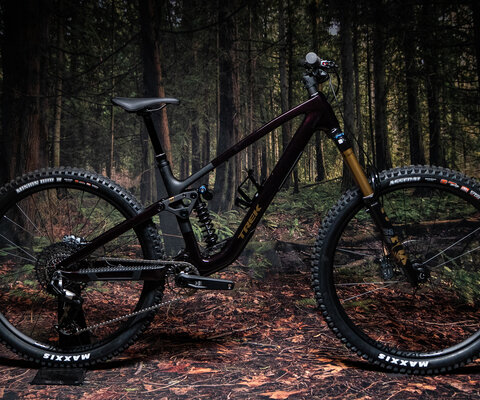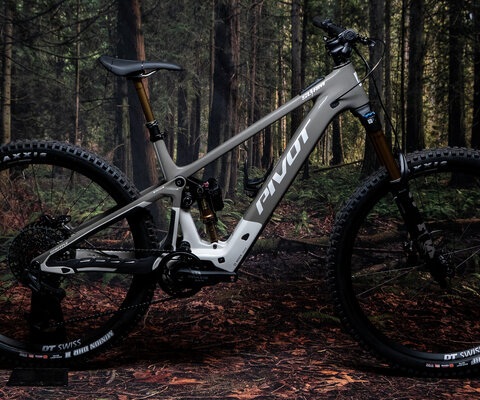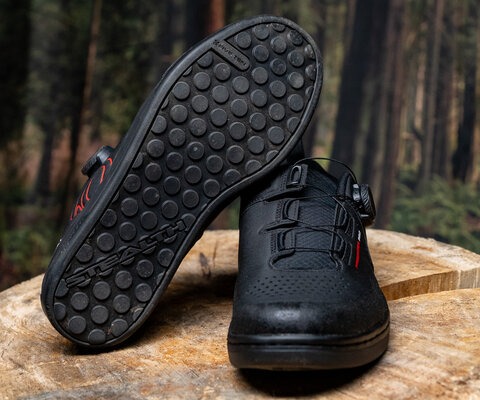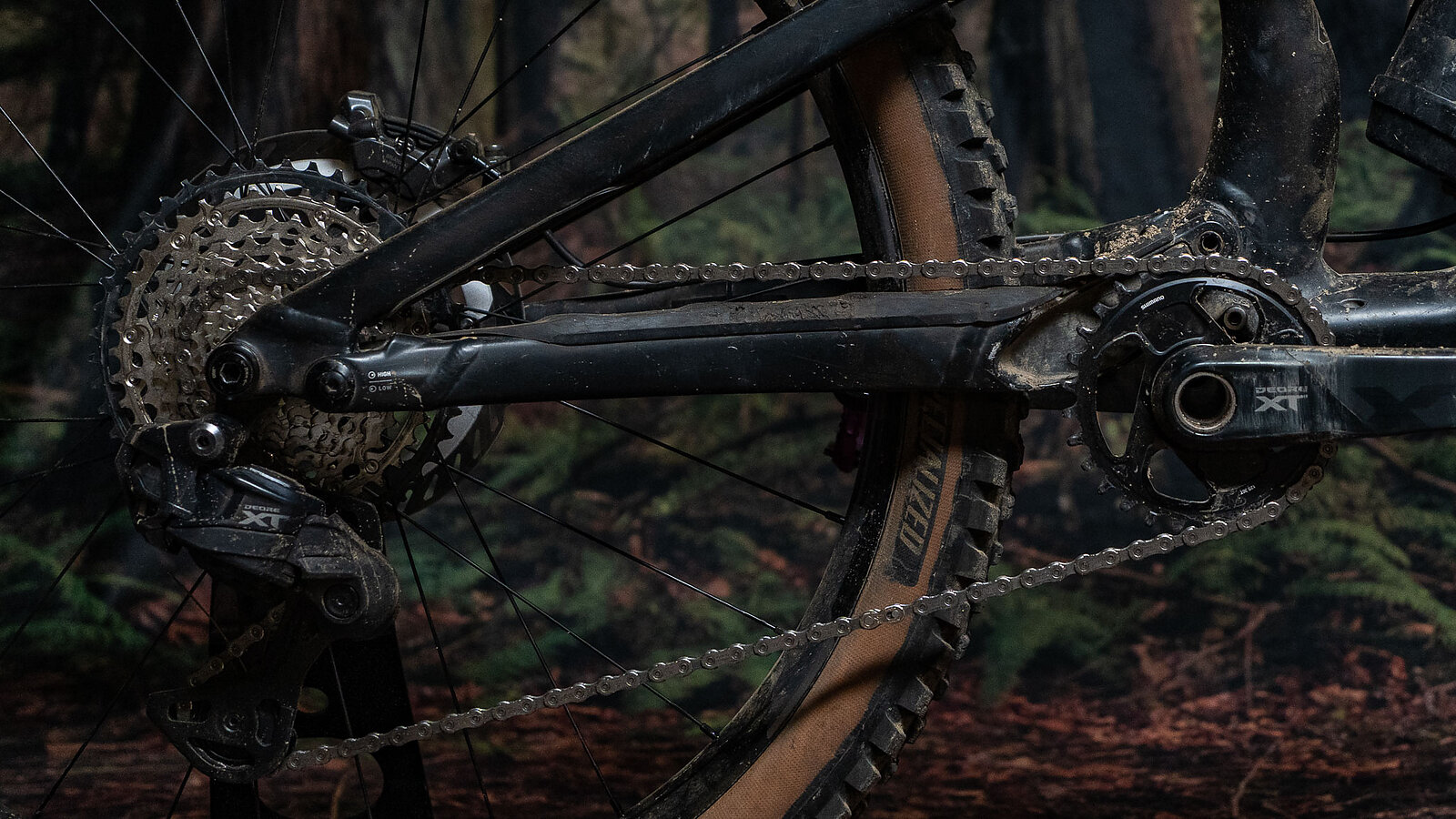
Shimano XT Di2 Wireless Drivetrain The most interesting option.
Words and Photos by Cy Whitling
Earlier this summer, Shimano dropped its new XTR Di2 wireless drivetrain, which I introduced and reviewed. Then, immediately after, the company released Deore and XT level options as well. While I’ve been spending plenty of time on the XTR drivetrain, and have a long-term update in the books, it’s time to talk about the more affordable, more interesting younger sibling.
Why is this XT group more interesting? Well, beyond the obvious price drop (XT is almost $700 cheaper for a full groupset), I managed to get my hands on the mid-cage variant that revolves around a 12-speed, 9-45 tooth cassette. And, yes, you can get an XTR groupset with the same gearing, but I think the XT version is going to be very compelling to a certain set of riders. This piece will break down how this groupset has performed so far, as well as compare and contrast it to the 10-51 tooth XTR group I’ve been riding.
Shimano XT Di2 Wireless Overview
- Speeds: 12
- Cassette range: 10-51T or 9-45T options
- System Weight: 1735 g (10-51 cassette, derailleur, shifter, cranks, chain, and battery
- MSRP: $1,985
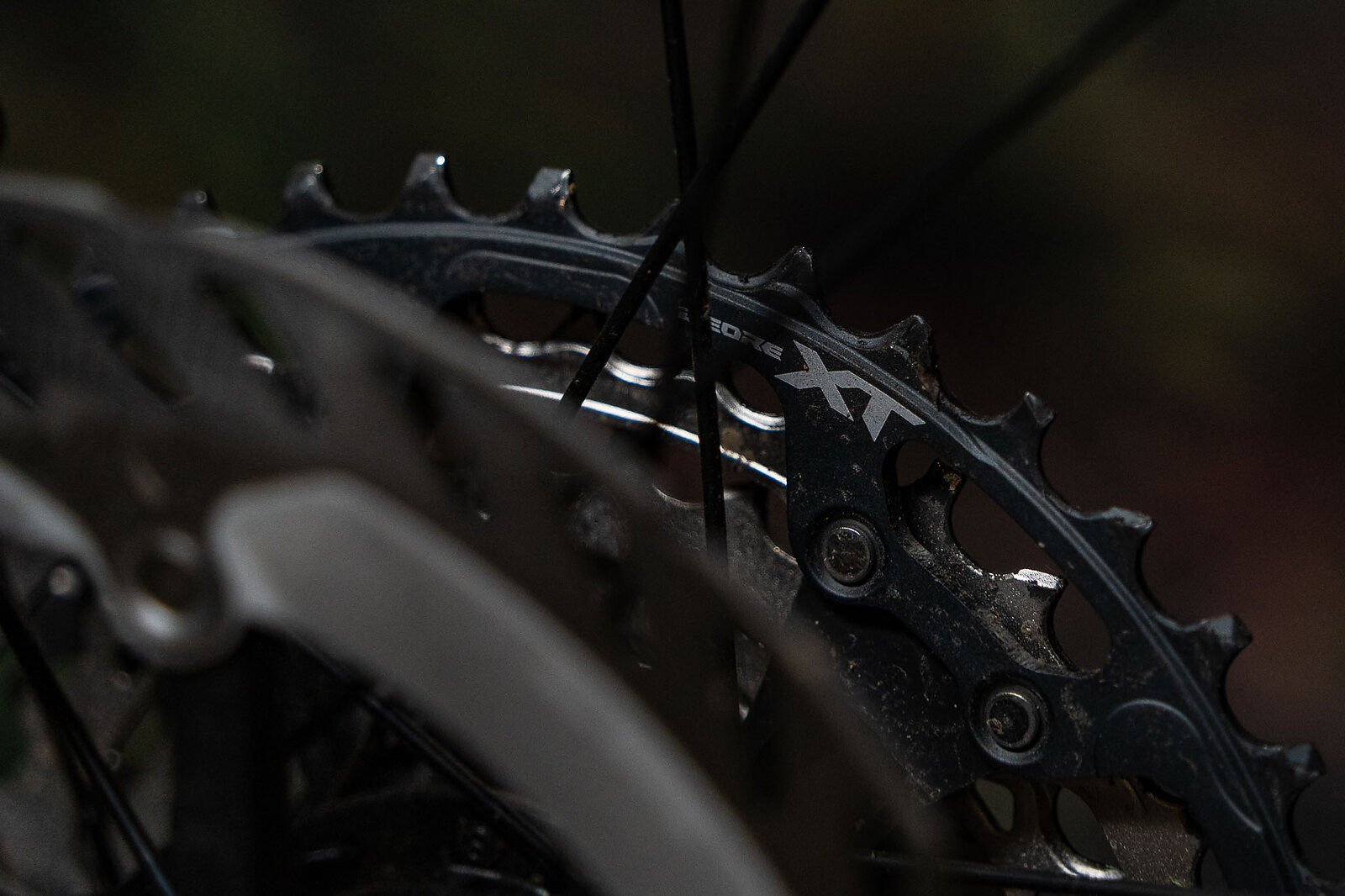
The Most Interesting Di2 Option
Remember the cassette wars? SRAM goes 50-tooth, Shimano bumps to 51, SRAM responds with 52. These days SRAM seems pretty married to 52-tooth granny gears, but Shimano launched these new drivetrains with the option to run a 9-45 tooth cassette at both XT and XTR levels. Sorry Deore—you’re stuck with the 10-51 tooth option. This (barely) smaller range choice has long been a part of Shimano’s arsenal for racers and folks who don’t want the dinner plate granny gear
That gives riders the option to run a slightly smaller gear spread (500% versus 510%) and improve ground clearance both at the derailleur and the chainring. You’ll probably want to drop down a chainring size if you’re worried about your climbing gears, which may or may not have chainstay clearance implications.
About that smaller spread: Shimano helpfully ran the math here. When comparing a 32T x 10-51T drivetrain to a 28T x 9-45T drivetrain, there's a 2% difference in total gear range. The average jump between gears in either cassette is 16%, which means that the 9-45T cassette has 1/8th of a shift less of total range. Between the easiest climbing gear on those two drivetrains, your climbing gear ratio is nearly identical, and you loose a little bit of top end speed when spinning out the 9T.
My caveman simplified version of this is that I can run a 30T up front, with this smaller cassette, on a 27.5" wheeled bike and be pretty delighted with the gears I have on tap for the vast majority of my riding.
I don’t want to just show all my cards for this review, but I think that the XT 9-45 tooth groupset is the best articulated implementation of Shimano’s new drivetrain tech, and the version that makes the most sense in the current drivetrain market.
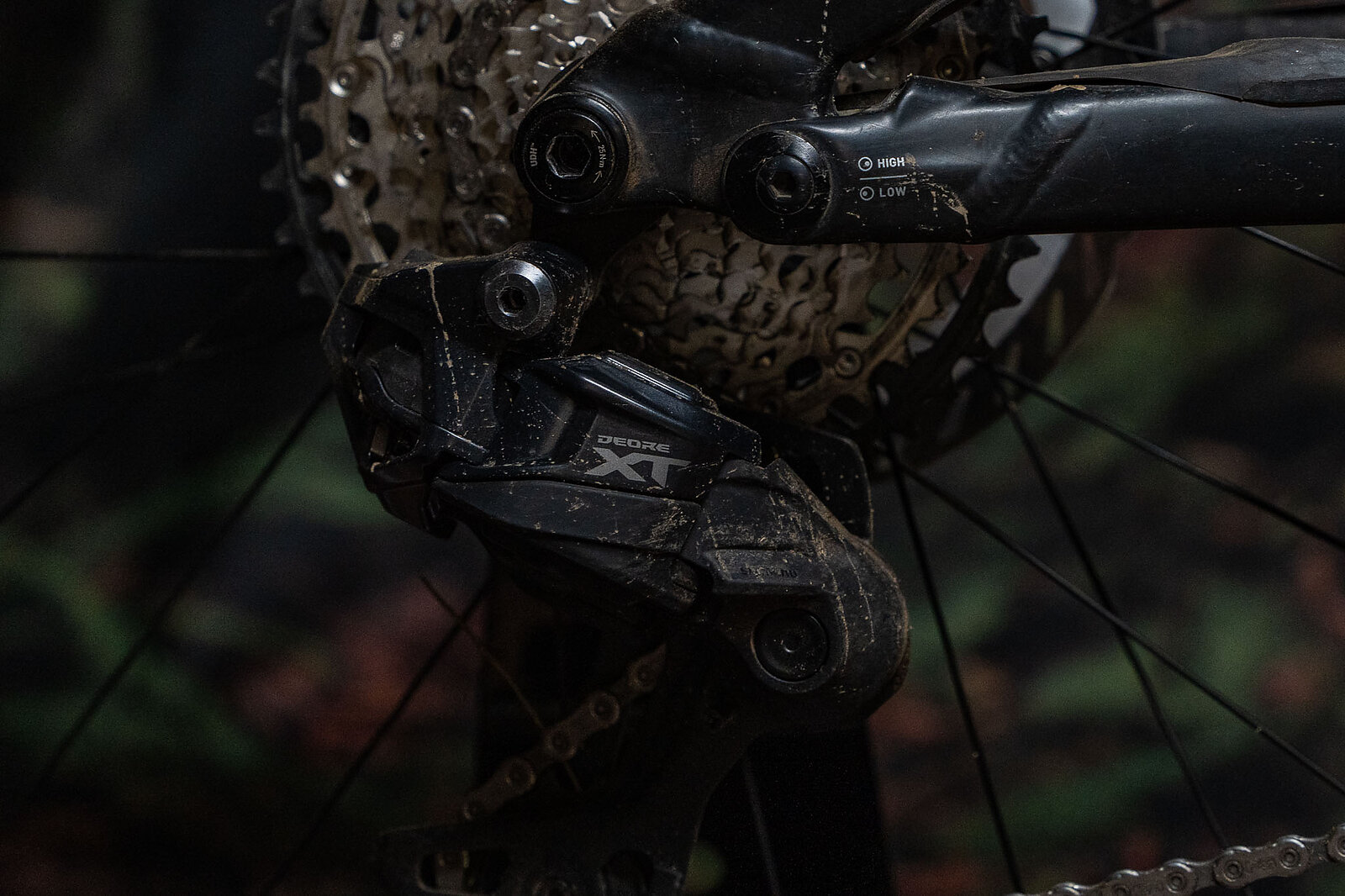
It offers a different gear spread from SRAM that many folks will appreciate and, in my experience at least, performs similarly to or even better than the 10-51 tooth XTR group I’ve been testing.
Before we get into that though: Shimano is also selling alloy XT wheels that I’ve been reviewing. They’re available in mixed sizes (XTR carbon wheels are not) and unsurprisingly, they’re CenterLock and Microspline only.
The rest of the XT Di2 group plugs seamlessly into Shimano’s 12-speed ecosystem. You can mix and match cranks and chains with Deore, or XTR, or with previous cable driven parts as well.
XT Di2 gets a very similar hyper-adjustable, double-click ready shifter to XTR. The derailleur cage is made of aluminum instead of carbon but it has the same dual-spring, no-clutch design as XTR.
Finally, the new XT brakes are very similar to the XTR version I reviewed. They’ve got the same new fluid, new lever, and new architecture, but use a different two-piece caliper design and have different finishes.
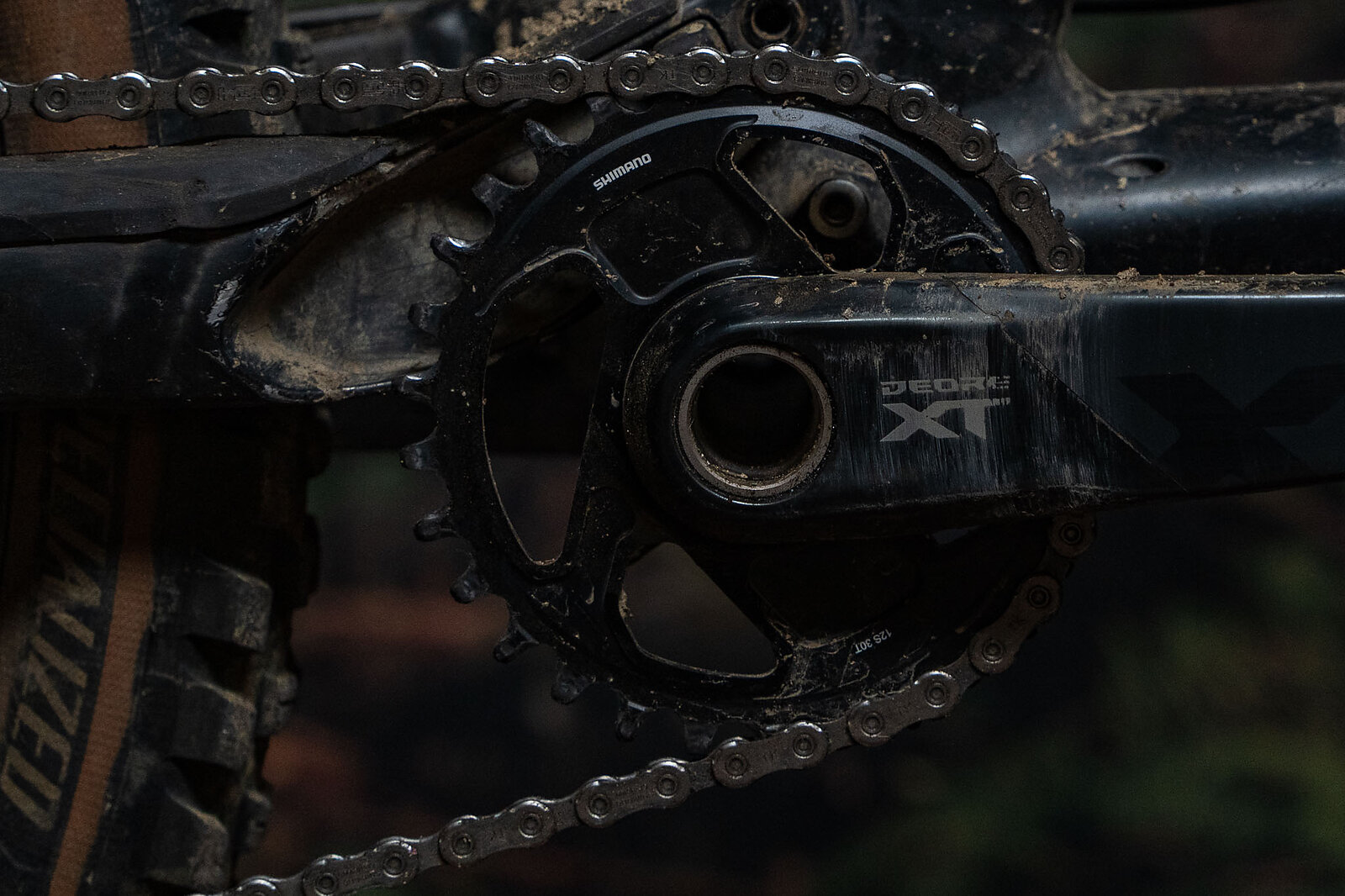
XT Di2 Installation and Setup
Really, this section exists for one reason: it’s a reminder that you’ll need the special TL-LR021 lockring tool to install the 9-tooth cog on the cassette that doubles as the lockring.
Otherwise, installation went smoothly. Set your B-tension using the handy line on the derailleur. Set your chain length using Shimano’s guide. Set your limit screws, make sure everything paired nicely, and party on.
No, it’s not quite so set-and-forget as Transmission. And, yes, you still have a derailleur hanger to deal with, but it’s not too frustrating. Anecdotally, my XT brakes bled faster and easier than the XTRs did, but that could just be luck.
I have noticed that the XT wheels are a little harder to set the bead than most others I've used. I had to use a compressor to set tires from Maxxis, Schwalbe, and Specialized, where I can usually get away with a floor pump.
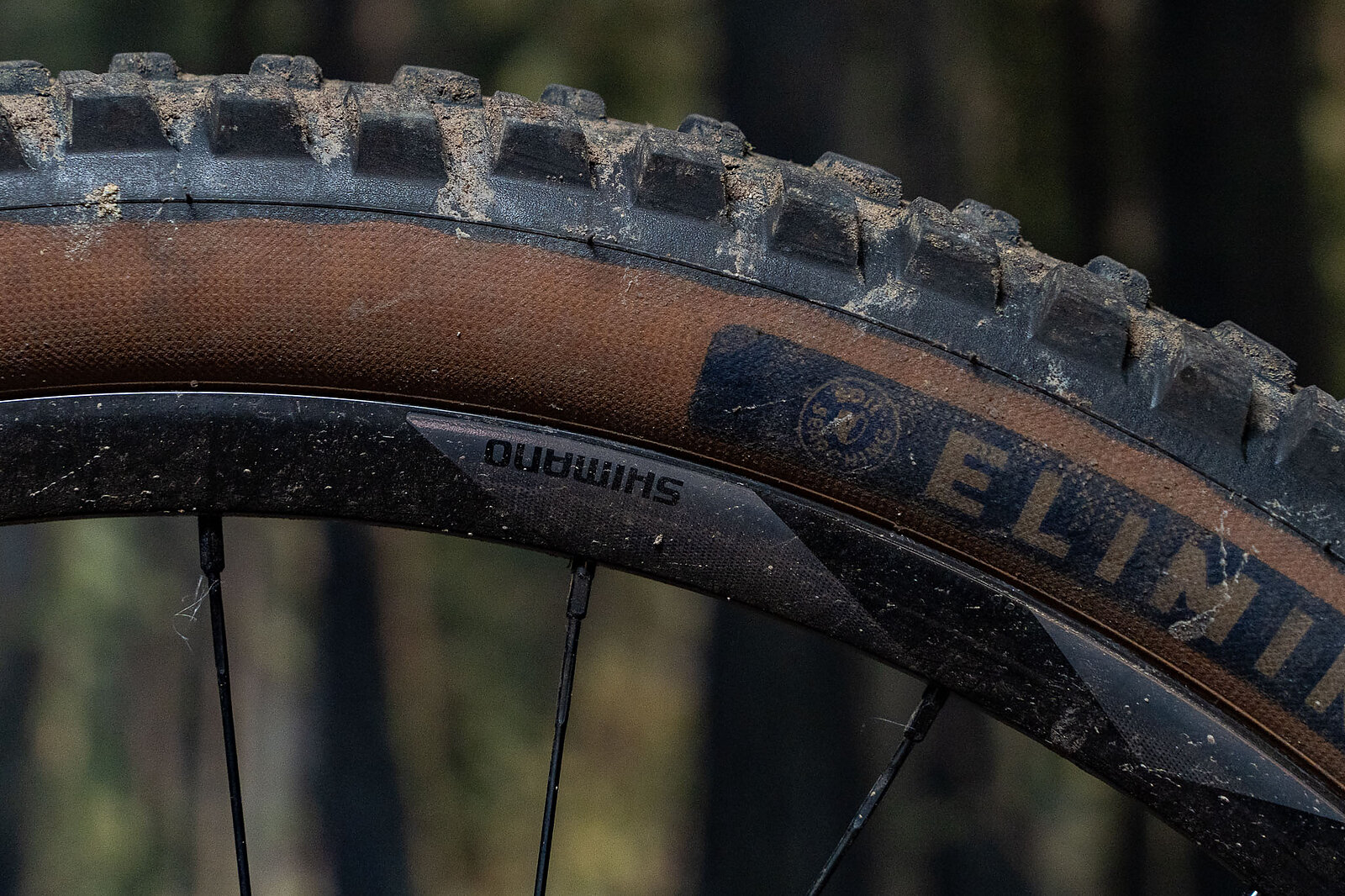
XT Di2 Performance
The short version is that beyond the price and (small) weight difference, I’m not sure that most folks could tell XT and XTR apart in a blind test. This XT groupset has the same crisp, super fast shifting as the XTR group. The shifter feel and adjustability is very similar.
The same goes for the brakes. They feel the same, they bite the same, they mostly eliminate pad rattle the same, and they handle the heat the same as XTR.
Shimano is leaning into what I’d call a “light” shifting experience. Shimano drivetrains have long been more feathery, and less clunky and definitive than SRAM, and contrasting Transmission with these new Shimano drivetrains really showcases the divide. It takes less pressure at the shifter, and the derailleur and shifting noises themselves are quieter and less hard-edged.
Honestly, if I’d reviewed the 10-51 tooth version of XT, this would be a very boring review. It does XTR things but weighs a touch more and costs a touch less.
But, I think the 9-45 tooth version brings something different and compelling to the table.
My primary complaint with XTR is that it’s loud. I’m not alone in this observation. It feels like there’s more chain and derailleur slap with these new drivetrains than there was with the old clutched versions, or is present with a Transmission drivetrain. I would gently term XTR as giving my bike “shopping cart energy.” It doesn’t hurt performance, but it’s a little annoying.
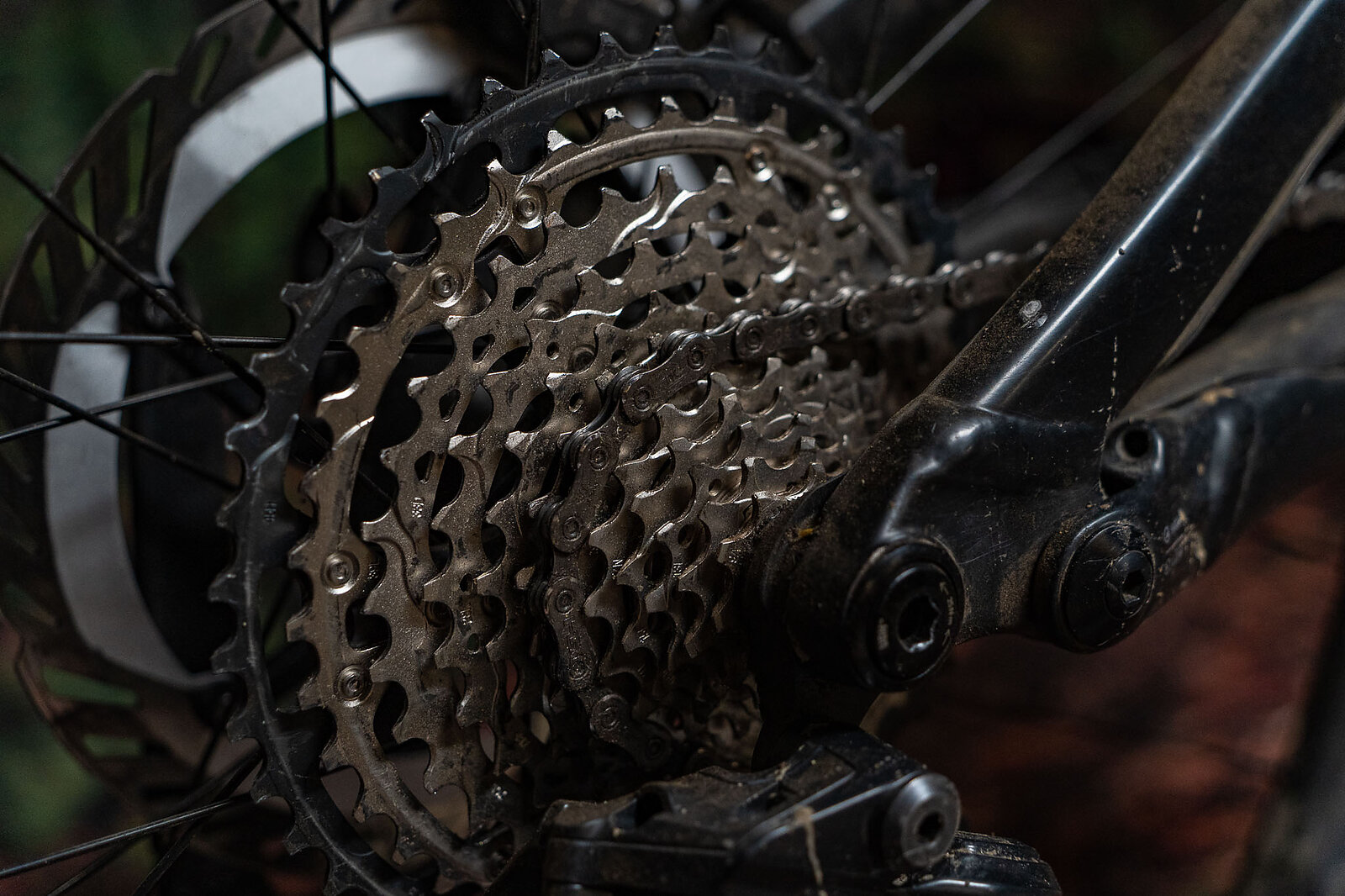
But, it turns out that when you make the derailleur cage shorter and eliminate some of the chain, there’s less mass to flap around. That means that this XT 9-45 tooth groupset is noticeably quieter and less clanky when descending than the XTR 10-51 tooth version. It’s not perfect—I’ve still had friends ask if my bike was OK after following me on a descent, but it’s palatable.
That alone would justify the 9-45 tooth option to me. But, additionally, it also gets you a couple centimeters more of ground clearance and, if you drop a couple teeth off your chainring, buys you better bottom bracket clearance as well.
I’m running this drivetrain on a mulleted Specialized Stumpjumper 15, with 165-millimeter cranks and a 30-tooth chainring, and the gearing combination feels perfect for riding on Galbraith, a moderately punchy riding zone with a mix of cross-country, rolling singletrack and fireroad climbs that lead to sustained, downhill-only descent trails. I’d be tempted to drop to a 28-tooth ring if I was riding steeper climbs but, as it is, my easiest gear is perfect for the steepest trails around home.
It's worth noting that although this cassette covers a slightly smaller (500% vs 10-51's 510%) spread, the jumps between gears aren't all smaller. At the top and bottom of the cassette, the jumps are (barely) bigger than the 10-51T cassette, while in the 15-28T spread they're slightly smaller or the same. Regaurdless, the shifts all feel light, tight, and crispy.
The shift quality is superb as are the shifter ergenomics. Maybe it’s just a fluke, but I think I’m getting crisper shifts out of this XT group than I was with XTR. Maybe I just did a better job of setting up XT? Regardless, these shifts are buttery and very consistent. While I had to readjust the limit screws and B-tension screw on my XTR drivetrain several times in the first month of riding, I haven’t had to touch the XT version.
There’s something very satisfying about banging through the gears on this smaller cassette, and I think that folks who want a little more clearance, a slightly different gear spread, and a fair bit less chain slap will really dig this drivetrain.
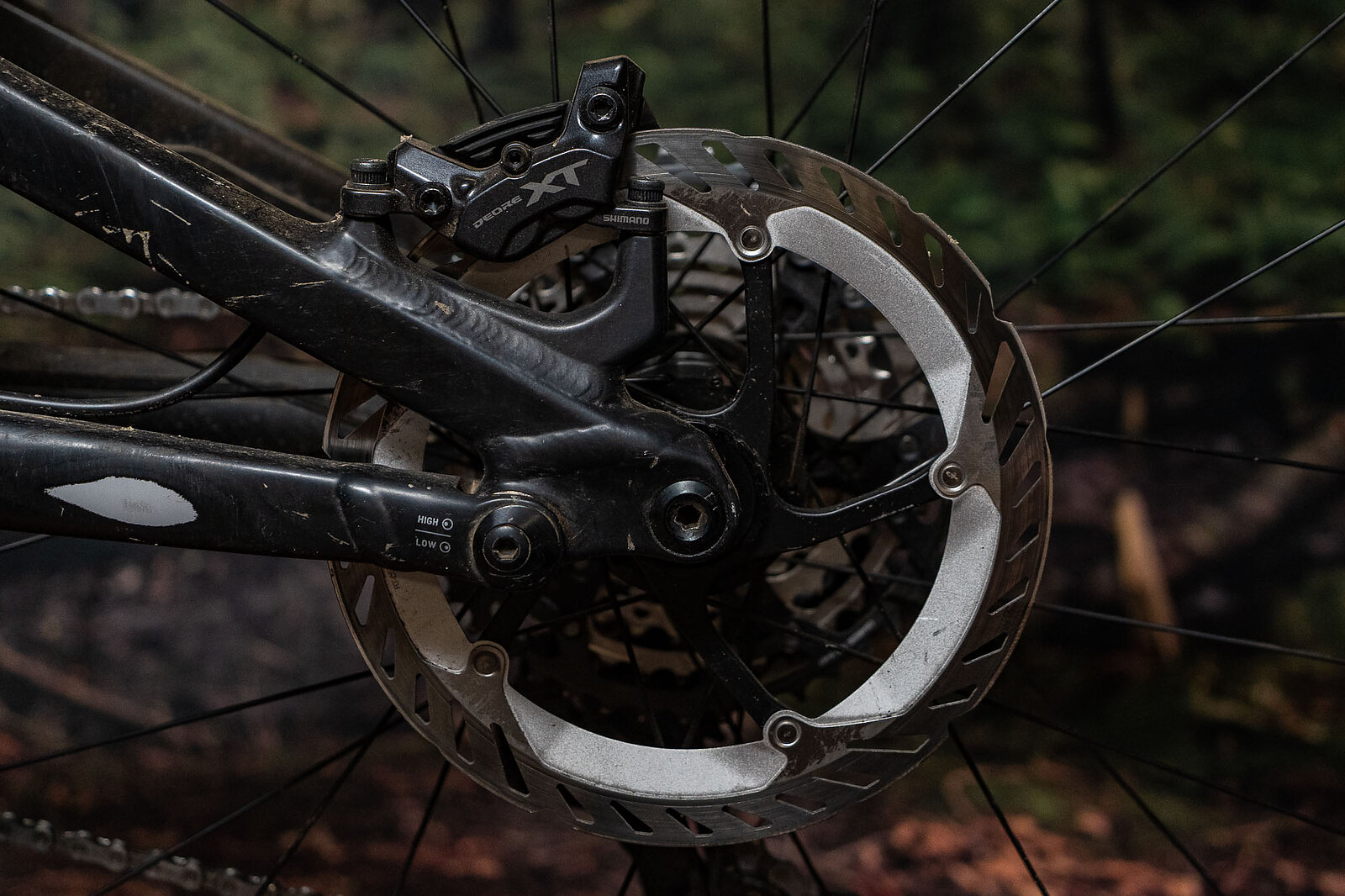
How About the Other Bits?
I really like the ride feel of these XT alloy wheels. They have a nice blend of forgiveness and energy in corners and tech and, so far, they’re round and undented.
I also quite like how the XT brakes feel on trail bike trails. The lever feel is excellent, as are the ergonomics, and they bite nicely and predictably before they ramp up. That said, I have definitely found the edge of both of these, and the XTR brakes with 203-millimeter rotors.
I’ve made this caveat before, but I’m a heavy dude who isn’t that great at bikes and loves steep trails that ask a lot of my brakes. And when those factors are in play, I can fry Shimano’s current brakes pretty effectively in about 1,000 feet of descending. That means loud noises, less-than-optimal lever feel, and ineffective pad/rotor friction. Yes, Jackson Goldstone can win World Cups on these brakes. I am not Jackson Goldstone. In my experience, SRAM’s Maven and the Hayes Dominion brakes both still eclipse Shimano’s new brakes in terms of power and heat resistance by a fair margin.
All that to say: the XT brakes are great for trail bikes. But if you want to do downhill bike things on your trail bike, and you’re heavy, they’re not my top choice.
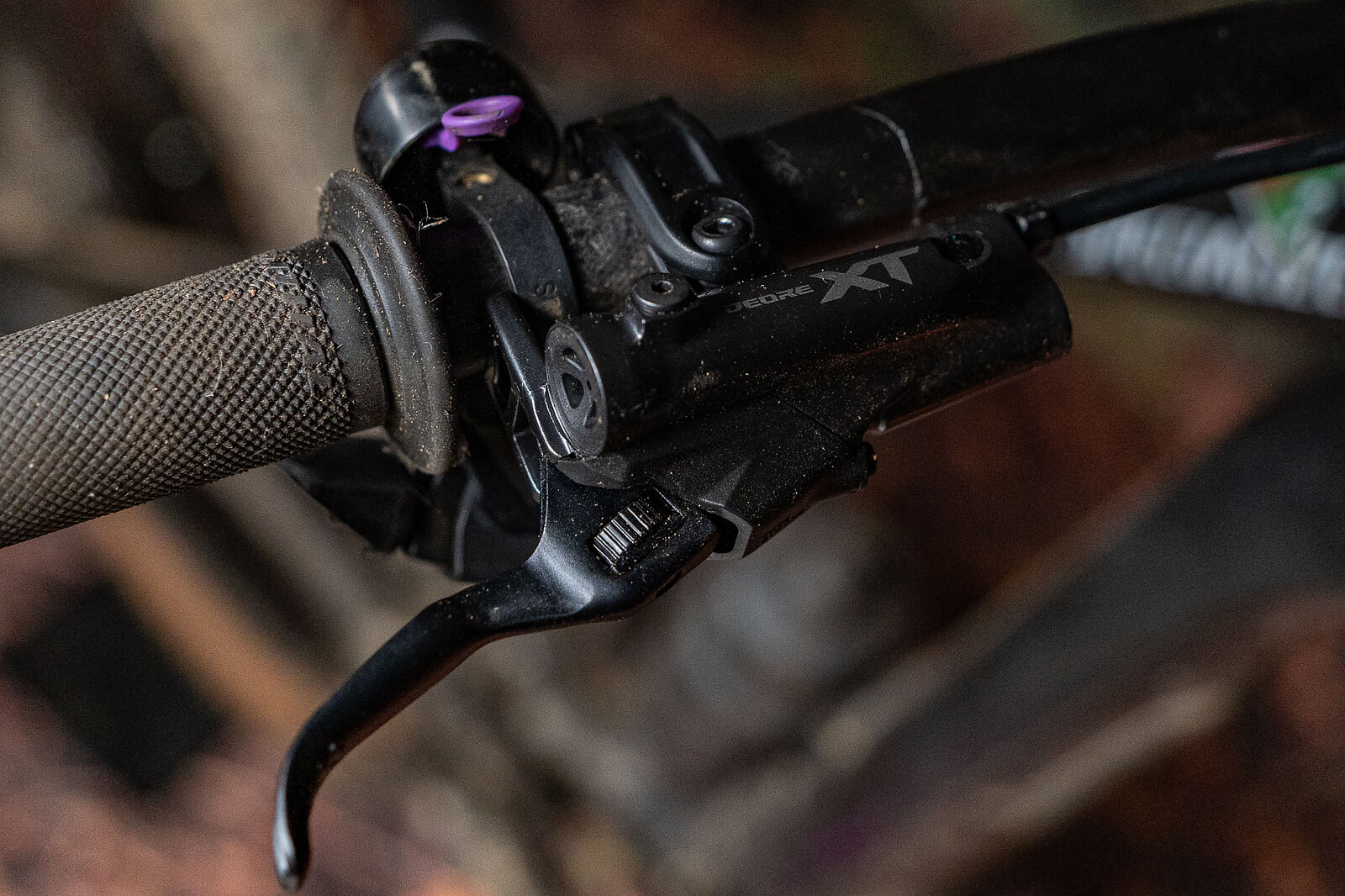
For Now
The most exciting thing about Shimano’s summer launches was how they kept the door open for experimentation. Cassette ranges don’t need to be one-size-fits all. Some folks will really prefer the 10-51 tooth option, while others will benefit from the smaller 9-45. I definitely fall into that latter group. This XT drivetrain is a compelling option for folks who want a smaller cassette and derailleur, better clearance, and the same buttery wireless performance as XTR Di2.
Learn More: Shimano.com
